The Pietroasele Treasure, also known as the Petrossa Treasure, emerged as a dazzling revelation in 1837 when two peasants, Ion Lemnaru and Stan Avram, stumbled upon a hoard of gold artifacts in an ancient grave in Pietroasele, Buzău County, Romania. This treasure, nicknamed “The hatching hen and the golden chicken,” comprised 22 exquisite gold pieces, including a remarkable eagle-headed fibula, a patera adorned with Gothic gods, a large tray, a pitcher, and two necklaces.
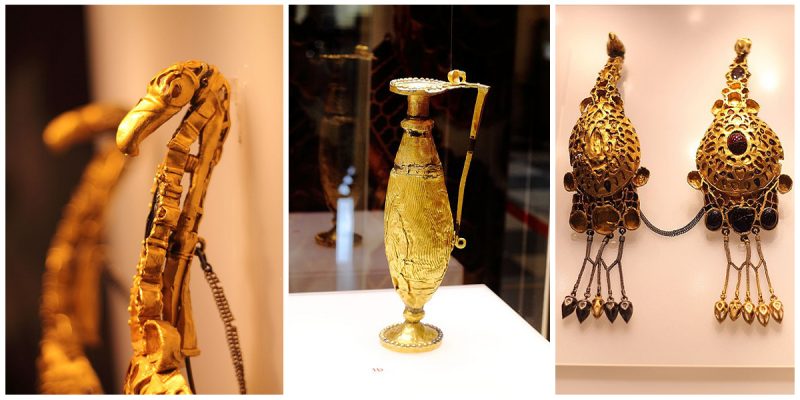
The Discovery and Controversial Journey
The two peasants initially kept the gold objects and later sold them to an Albanian businessman named Verussi. In a bid to avoid detection during transport, Verussi reportedly smashed the items into smaller pieces. However, a year later, authorities from the Inland Affairs Department learned of the treasure, leading to the seizure of the artifacts. The journey of the Pietroasele Treasure continued as it was shipped to Russia during World War I to avoid German armies, only to return to Romania in the 1950s.
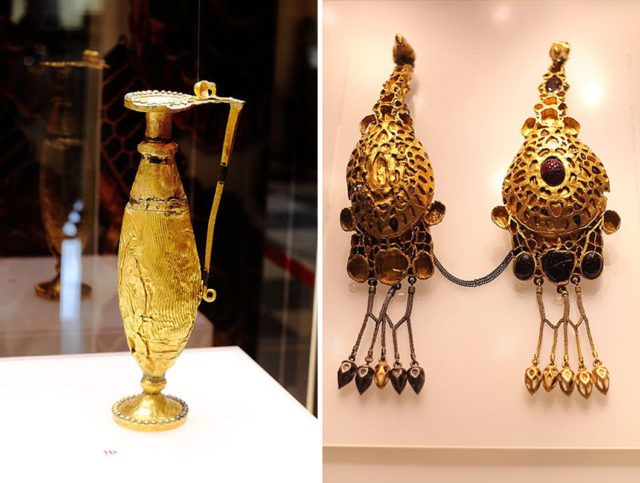
It was the greatest treasure of gold until the discovery of Tutankhamon. Photo Credit1 Photo Credit2
The Visigothic Connection
The origin of the gold objects is attributed to the Visigoths, migratory nomadic tribes of Germanic peoples who reached the Black Sea region by the 3rd century A.D. The artifacts are believed to date back to the late 4th century AD and the early 5th century AD, buried around the mid-5th century. Not only do the artifacts showcase artistic representations of deities, but they also provide insights into Gothic religious beliefs.
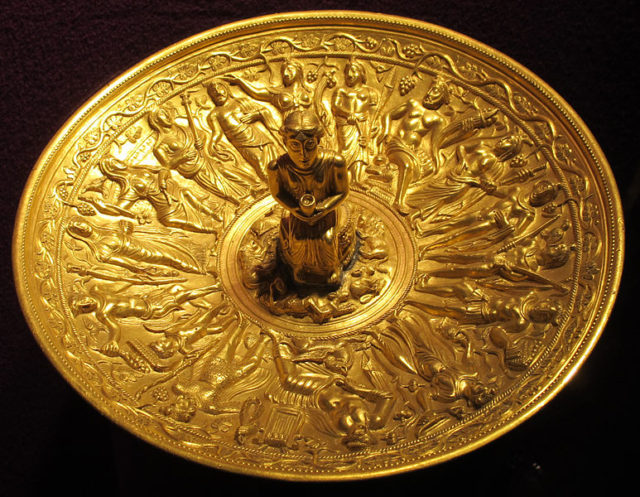
The gold patera. Photo Credit
The Ring of Pietroasele
The ring of Pietroassa (drawing by Henri Trenk, 1875). Photo Credit
One of the most intriguing pieces is the Ring of Pietroasele, also known as the Buzău torc. With runic inscriptions, the ring offers a glimpse into pre-Christian Gothic religious beliefs. Despite sustaining irreparable damage shortly after its discovery, scholars have attempted various reconstructions and interpretations. The symbols on the ring, identified as belonging to the Elder Futhark alphabet, are thought to have provided some form of magical protection to the wearer.
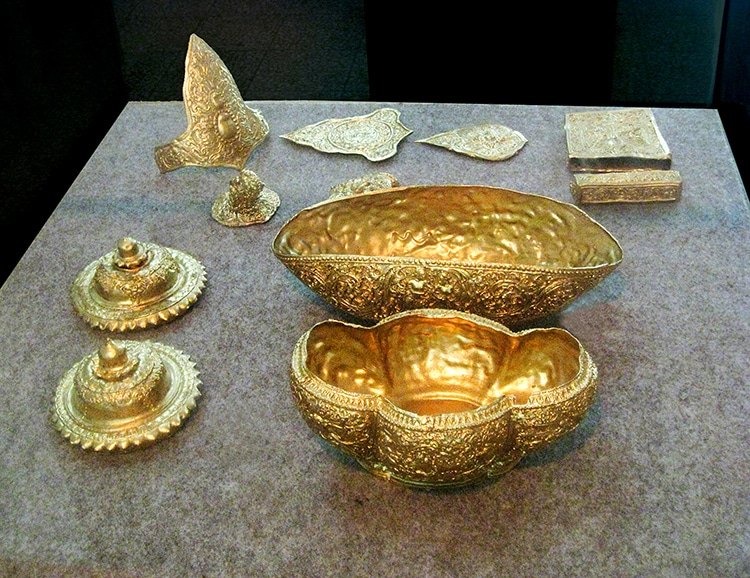
Eagle-shaped middle fibulae, worn in pairs by gothic women. Photo Credit1 Photo Credit2
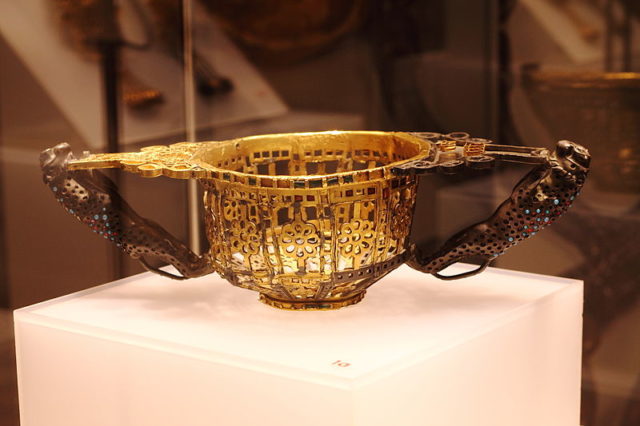
Now the greatest part of treasure is seen at The National Museum in Bucharest. Photo Credit
Preservation and Display
Of the original 22 pieces weighing 27 kg, only 12, totaling 18.795 kg, have survived. Today, these precious artifacts are conserved and displayed at The National Museum of Romanian History in Bucharest. The museum serves as a custodian of this remarkable treasure, allowing visitors to marvel at the intricate craftsmanship and unravel the mysteries of Gothic culture and religious beliefs.
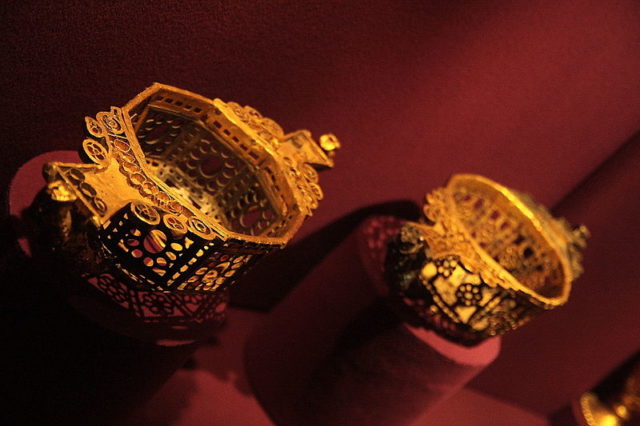
There were 22 pieces in total, but only 12 have survived. Photo Credit
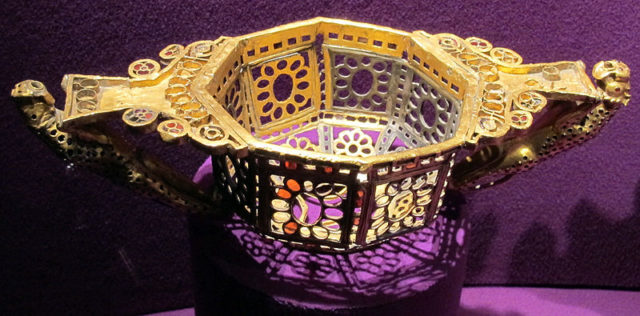
Among the most famous examples of the polychrome style of Migration Period art. Photo Credit
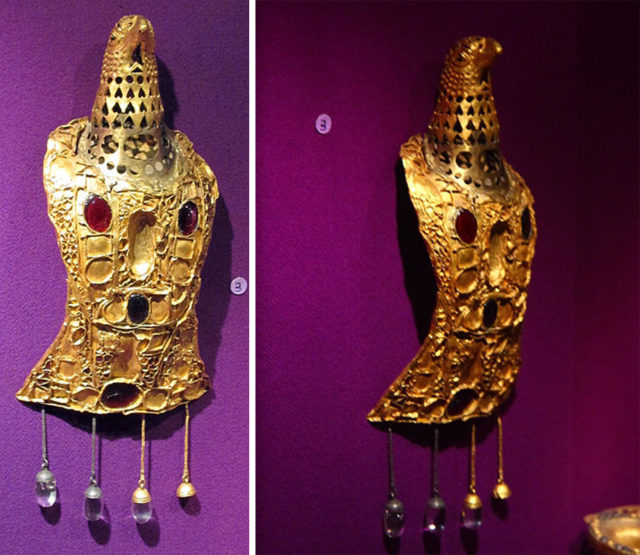
An eagle-shaped fibula. Photo Credit1 Photo Credit2
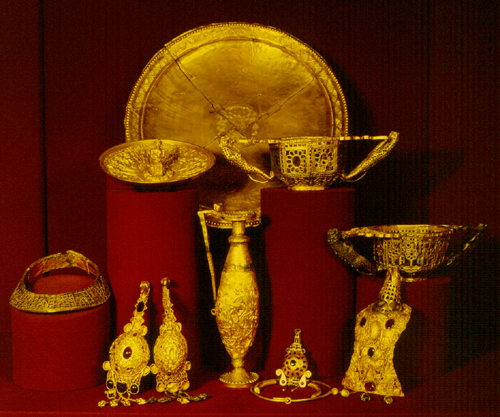
The Pietroasele Treasure stands as a testament to the artistry and spiritual beliefs of the Visigoths during the Migration Period. Despite the challenges faced during its discovery and subsequent journey, this collection of gold artifacts continues to captivate historians, archaeologists, and visitors alike, shedding light on a fascinating chapter in Romania’s rich cultural heritage.